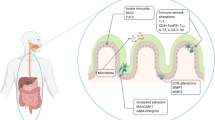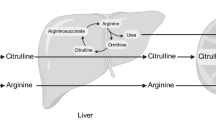Abstract
Galectin-3, a member of the β-galactoside-binding lectin family, expresses in many different immune cells and modulates broad biological functions including cell adhesion, cell activation, cell growth, apoptosis, and inflammation. However, the role of galectin-3 in mucosal immunity or inflammatory bowel diseases is still not clear. We demonstrate here that galectin-3 knockout mice have more severe disease activity in the dextran sulfate sodium (DSS)-induced colitis model, indicating that galectin-3 may protect from inflammation in DSS-induced colitis. Furthermore, treating with galectin-3 reduced body weight loss, shortened colonic length, and ameliorated mucosal inflammation in mice having DSS-induced colitis. However, the protective effects of galectin-3 were eliminated by the administration of anti-CD25 mAb. In addition, primary T cells treated with galectin-3 ex vivo induced the expression of FOXP3, ICOS, and PD-1 with a Treg cell phenotype having a suppression function. Moreover, adoptive transfer of galectin-3-treated T cells reduced bowel inflammation and colitis in the T cell transfer colitis model. In conclusion, our results indicate that galectin-3 inhibited colonic mucosa inflammation and reduced disease severity by inducing regulatory T cells, suggesting that it is a potential therapeutic approach in inflammatory bowel disease.
Key messages
-
Galectin-3 offers protection from inflammation in experimental colitis.
-
Galectin-3 knockout mice have more severe disease activity in DSS-induced colitis.
-
Adoptive transfer of galectin-3-treated T cells reduced bowel inflammation.
-
Galectin-3 inhibited colonic mucosa inflammation by inducing regulatory T cells.
-
Galectin-3 is a potential therapeutic approach in inflammatory bowel disease.






Similar content being viewed by others
References
Rabinovich GA, Toscano MA (2009) Turning ‘sweet’ on immunity: galectin-glycan interactions in immune tolerance and inflammation. Nat Rev Immunol 9:338–352
Chen HY, Fermin A, Vardhana S, Weng IC, Lo KF, Chang EY, Maverakis E, Yang RY, Hsu DK, Dustin ML et al (2009) Galectin-3 negatively regulates TCR-mediated CD4+ T-cell activation at the immunological synapse. Proc Natl Acad Sci U S A 106:14496–14501
Fukumori T, Takenaka Y, Yoshii T, Kim HR, Hogan V, Inohara H, Kagawa S, Raz A (2003) CD29 and CD7 mediate galectin-3-induced type II T-cell apoptosis. Cancer Res 63:8302–8311
Stillman BN, Hsu DK, Pang M, Brewer CF, Johnson P, Liu FT, Baum LG (2006) Galectin-3 and galectin-1 bind distinct cell surface glycoprotein receptors to induce T cell death. J Immunol 176:778–789
Jiang HR, Al Rasebi Z, Mensah-Brown E, Shahin A, Xu D, Goodyear CS, Fukada SY, Liu FT, Liew FY, Lukic ML (2009) Galectin-3 deficiency reduces the severity of experimental autoimmune encephalomyelitis. J Immunol 182:1167–1173
Forsman H, Islander U, Andreasson E, Andersson A, Onnheim K, Karlstrom A, Savman K, Magnusson M, Brown KL, Karlsson A (2011) Galectin 3 aggravates joint inflammation and destruction in antigen-induced arthritis. Arthritis Rheum 63:445–454
Saegusa J, Hsu DK, Chen HY, Yu L, Fermin A, Fung MA, Liu FT (2009) Galectin-3 is critical for the development of the allergic inflammatory response in a mouse model of atopic dermatitis. Am J Pathol 174:922–931
Fermin Lee A, Chen HY, Wan L, Wu SY, Yu JS, Huang AC, Miaw SC, Hsu DK, Wu-Hsieh BA, Liu FT (2013) Galectin-3 modulates Th17 responses by regulating dendritic cell cytokines. Am J Pathol 183:1209–1222
Kamada N, Seo SU, Chen GY, Nunez G (2013) Role of the gut microbiota in immunity and inflammatory disease. Nat Rev Immunol 13:321–335
Peterson LW, Artis D (2014) Intestinal epithelial cells: regulators of barrier function and immune homeostasis. Nat Rev Immunol 14:141–153
Frol'ova L, Smetana K Jr, Borovska D, Kitanovicova A, Klimesova K, Janatkova I, Malickova K, Lukas M, Drastich P, Benes Z et al (2009) Detection of galectin-3 in patients with inflammatory bowel diseases: new serum marker of active forms of IBD? Inflamm Res 58:503–512
Jensen-Jarolim E, Gscheidlinger R, Oberhuber G, Neuchrist C, Lucas T, Bises G, Radauer C, Willheim M, Scheiner O, Liu FT et al (2002) The constitutive expression of galectin-3 is downregulated in the intestinal epithelia of Crohn's disease patients, and tumour necrosis factor alpha decreases the level of galectin-3-specific mRNA in HCT-8 cells. Eur J Gastroenterol Hepatol 14:145–152
Muller S, Schaffer T, Flogerzi B, Fleetwood A, Weimann R, Schoepfer AM, Seibold F (2006) Galectin-3 modulates T cell activity and is reduced in the inflamed intestinal epithelium in IBD. Inflamm Bowel Dis 12:588–597
Bregenholt S, Claesson MH (1998) Splenic T helper cell type 1 cytokine profile and extramedullary haematopoiesis in severe combined immunodeficient (scid) mice with inflammatory bowel disease (IBD). Clin Exp Immunol 111:166–172
Hundorfean G, Neurath MF, Mudter J (2012) Functional relevance of T helper 17 (Th17) cells and the IL-17 cytokine family in inflammatory bowel disease. Inflamm Bowel Dis 18:180–186
Iijima H, Takahashi I, Kishi D, Kim JK, Kawano S, Hori M, Kiyono H (1999) Alteration of interleukin 4 production results in the inhibition of T helper type 2 cell-dominated inflammatory bowel disease in T cell receptor alpha chain-deficient mice. J Exp Med 190:607–615
Monteleone I, Sarra M, Pallone F, Monteleone G (2012) Th17-related cytokines in inflammatory bowel diseases: friends or foes? Curr Mol Med 12:592–597
Tanner SM, Staley EM, Lorenz RG (2013) Altered generation of induced regulatory T cells in the FVB.mdr1a-/- mouse model of colitis. Mucosal Immunol 6:309–323
Okamura M, Yoh K, Ojima M, Morito N, Takahashi S (2014) Overexpression of GATA-3 in T cells accelerates dextran sulfate sodium-induced colitis. Exp Anim 63:133–140
Sujino T, Kanai T, Ono Y, Mikami Y, Hayashi A, Doi T, Matsuoka K, Hisamatsu T, Takaishi H, Ogata H et al (2011) Regulatory T cells suppress development of colitis, blocking differentiation of T-helper 17 into alternative T-helper 1 cells. Gastroenterology 141:1014–1023
Lindebo Holm T, Poulsen SS, Markholst H, Reedtz-Runge S (2012) Pharmacological evaluation of the SCID T cell transfer model of colitis: as a model of Crohn’s disease. Int J Inflam 2012:412178
Rose WA 2nd, Sakamoto K, Leifer CA (2012) Multifunctional role of dextran sulfate sodium for in vivo modeling of intestinal diseases. BMC Immunol 13:41
Yan Y, Kolachala V, Dalmasso G, Nguyen H, Laroui H, Sitaraman SV, Merlin D (2009) Temporal and spatial analysis of clinical and molecular parameters in dextran sodium sulfate induced colitis. PLoS One 4, e6073
Hsu DK, Yang RY, Pan Z, Yu L, Salomon DR, Fung-Leung WP, Liu FT (2000) Targeted disruption of the galectin-3 gene results in attenuated peritoneal inflammatory responses. Am J Pathol 156:1073–1083
Yang RY, Hsu DK, Liu FT (1996) Expression of galectin-3 modulates T-cell growth and apoptosis. Proc Natl Acad Sci U S A 93:6737–6742
Robertson MW, Albrandt K, Keller D, Liu FT (1990) Human IgE-binding protein: a soluble lectin exhibiting a highly conserved interspecies sequence and differential recognition of IgE glycoforms. Biochemistry 29:8093–8100
Hsu DK, Zuberi RI, Liu FT (1992) Biochemical and biophysical characterization of human recombinant IgE-binding protein, an S-type animal lectin. J Biol Chem 267:14167–14174
Schepp-Berglind J, Atkinson C, Elvington M, Qiao F, Mannon P, Tomlinson S (2012) Complement-dependent injury and protection in a murine model of acute dextran sulfate sodium-induced colitis. J Immunol 188:6309–6318
Maloy KJ (2007) Induction and regulation of inflammatory bowel disease in immunodeficient mice by distinct CD4+ T-cell subsets. Methods Mol Biol 380:327–335
Nakanishi Y, Tsuneyama K, Nomoto K, Fujimoto M, Salunga TL, Nakajima T, Miwa S, Murai Y, Hayashi S, Kato I et al (2008) Nonalcoholic steatohepatitis and hepatocellular carcinoma in galectin-3 knockout mice. Hepatol Res 38:1241–1251
Nomoto K, Tsuneyama K, Abdel Aziz HO, Takahashi H, Murai Y, Cui ZG, Fujimoto M, Kato I, Hiraga K, Hsu DK et al (2006) Disrupted galectin-3 causes non-alcoholic fatty liver disease in male mice. J Pathol 210:469–477
Pugliese G, Pricci F, Iacobini C, Leto G, Amadio L, Barsotti P, Frigeri L, Hsu DK, Vlassara H, Liu FT et al (2001) Accelerated diabetic glomerulopathy in galectin-3/AGE receptor 3 knockout mice. FASEB J 15:2471–2479
Strauch UG, Obermeier F, Grunwald N, Gurster S, Dunger N, Schultz M, Griese DP, Mahler M, Scholmerich J, Rath HC (2005) Influence of intestinal bacteria on induction of regulatory T cells: lessons from a transfer model of colitis. Gut 54:1546–1552
Elson CO, Cong Y, Iqbal N, Weaver CT (2001) Immuno-bacterial homeostasis in the gut: new insights into an old enigma. Semin Immunol 13:187–194
Sellon RK, Tonkonogy S, Schultz M, Dieleman LA, Grenther W, Balish E, Rennick DM, Sartor RB (1998) Resident enteric bacteria are necessary for development of spontaneous colitis and immune system activation in interleukin-10-deficient mice. Infect Immun 66(66):5224–5231
Kohatsu L, Hsu DK, Jegalian AG, Liu FT, Baum LG (2006) Galectin-3 induces death of Candida species expressing specific beta-1,2-linked mannans. J Immunol 177:4718–4726
Quattroni P, Li Y, Lucchesi D, Lucas S, Hood DW, Herrmann M, Gabius HJ, Tang CM, Exley RM (2012) Galectin-3 binds Neisseria meningitidis and increases interaction with phagocytic cells. Cell Microbiol 14:1657–1675
Sano H, Hsu DK, Apgar JR, Yu L, Sharma BB, Kuwabara I, Izui S, Liu FT (2003) Critical role of galectin-3 in phagocytosis by macrophages. J Clin Invest 112:389–397
Sato S, St-Pierre C, Bhaumik P, Nieminen J (2009) Galectins in innate immunity: dual functions of host soluble beta-galactoside-binding lectins as damage-associated molecular patterns (DAMPs) and as receptors for pathogen-associated molecular patterns (PAMPs). Immunol Rev 230:172–187
Stowell SR, Arthur CM, McBride R, Berger O, Razi N, Heimburg-Molinaro J, Rodrigues LC, Gourdine JP, Noll AJ, von Gunten S et al (2014) Microbial glycan microarrays define key features of host-microbial interactions. Nat Chem Biol 10:470–476
Wu C, Thalhamer T, Franca RF, Xiao S, Wang C, Hotta C, Zhu C, Hirashima M, Anderson AC, Kuchroo VK (2014) Galectin-9-CD44 interaction enhances stability and function of adaptive regulatory T cells. Immunity 41:270–282
Boehm F, Martin M, Kesselring R, Schiechl G, Geissler EK, Schlitt HJ, Fichtner-Feigl S (2012) Deletion of Foxp3+ regulatory T cells in genetically targeted mice supports development of intestinal inflammation. BMC Gastroenterol 12:97
Fantini MC, Becker C, Tubbe I, Nikolaev A, Lehr HA, Galle P, Neurath MF (2006) Transforming growth factor beta induced FoxP3+ regulatory T cells suppress Th1 mediated experimental colitis. Gut 55:671–680
Himmel ME, Yao Y, Orban PC, Steiner TS, Levings MK (2012) Regulatory T-cell therapy for inflammatory bowel disease: more questions than answers. Immunology 136:115–122
Ito T, Hanabuchi S, Wang YH, Park WR, Arima K, Bover L, Qin FX, Gilliet M, Liu YJ (2008) Two functional subsets of FOXP3+ regulatory T cells in human thymus and periphery. Immunity 28:870–880
Garin MI, Chu CC, Golshayan D, Cernuda-Morollon E, Wait R, Lechler RI (2007) Galectin-1: a key effector of regulation mediated by CD4+CD25+ T cells. Blood 109:2058–2065
Seki M, Oomizu S, Sakata KM, Sakata A, Arikawa T, Watanabe K, Ito K, Takeshita K, Niki T, Saita N et al (2008) Galectin-9 suppresses the generation of Th17, promotes the induction of regulatory T cells, and regulates experimental autoimmune arthritis. Clin Immunol 127:78–88
Acknowledgements
We thank Dr. Fu-Tong Liu (Academia Sinica, Taiwan) for kindly providing the galectin-3 knockout mice. We also thank the Department of Medical Research and core laboratory of National Taiwan University Hospital for facility support. This work was supported by grants from the National Science Council, Taiwan (NSC 98-2320-B-002-049-MY3, 100-2320-B-038-026, and 101-2321-B-002-008).
Author information
Authors and Affiliations
Corresponding author
Ethics declarations
Disclosures
The authors declare that they have no competing financial interests.
Additional information
Hwei-Fang Tsai and Chien-Sheng Wu contributed equally to this work.
Rights and permissions
About this article
Cite this article
Tsai, HF., Wu, CS., Chen, YL. et al. Galectin-3 suppresses mucosal inflammation and reduces disease severity in experimental colitis. J Mol Med 94, 545–556 (2016). https://doi.org/10.1007/s00109-015-1368-x
Received:
Revised:
Accepted:
Published:
Issue Date:
DOI: https://doi.org/10.1007/s00109-015-1368-x




